Jul 29, 2021 | Korea, Science and Policy, Young Scientists
By Fanni Daniella Szakal, 2021 IIASA Science Communication Fellow
Despite the political challenges, 2021 YSSP participant Eunbeen Park is researching ways to restore forests in isolated North Korea.
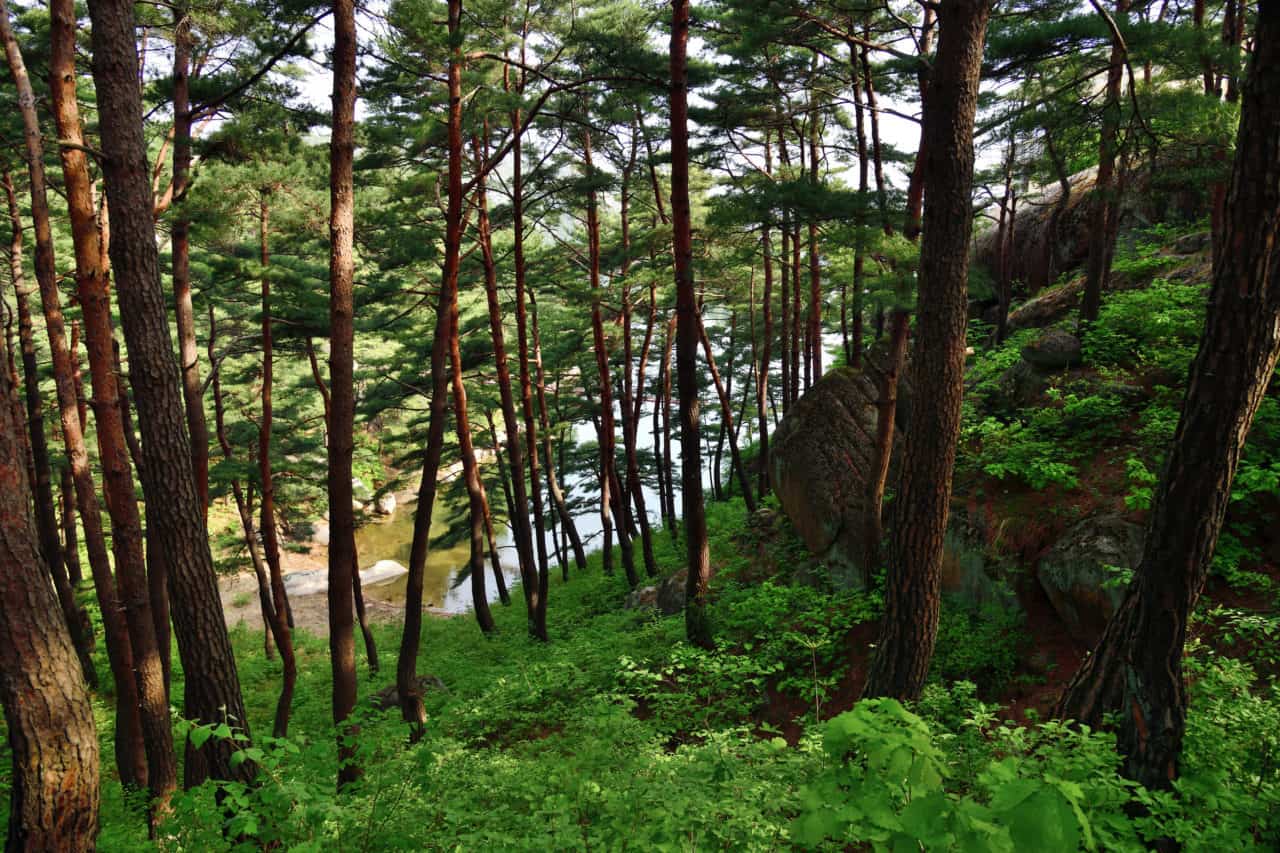
© Znm | Dreamstime.com
North Korea is somewhat of an enigma and getting a glimpse into what transpires behind its borders is a difficult task. Based on our limited information, it however seems that its once luscious forests have disappeared at an alarming rate in the last few decades.
Deforestation in North Korea is fueled by economic difficulties, climate change, and a lack of information for effective forest management. As forests are recognized as important carbon sinks that are invaluable when working towards the climate goals established in the Paris Agreement, finding a way to restore them is imperative. Forests are also essential in solving food insecurity and energy issues, which is especially relevant in the face of the current economic hardship in North Korea.
Neighboring South Korea serves as a benchmark for a successful reforestation campaign after having restored most of its forest cover in the last half a century. South Korean researchers and NGOs are keen to support afforestation efforts in North Korea and it seems that the North Korean government is also prioritizing this through a 10-year plan announced by North Korean leader Kim Jong-Un in 2015. The strained relationship between the two Koreas however, often hinders effective collaboration.
‘’We are close to North Korea regionally, but direct connection is difficult for political reasons. However, many researchers are interested in studying North Korea and there are currently many projects for South and North Korea collaboration supported by the Ministry of Unification,” says Eunbeen Park, a participant in the 2021 Young Scientists Summer Program and a second year PhD student in Environmental Planning and Landscape Architecture at Korea University in Seoul, South Korea.
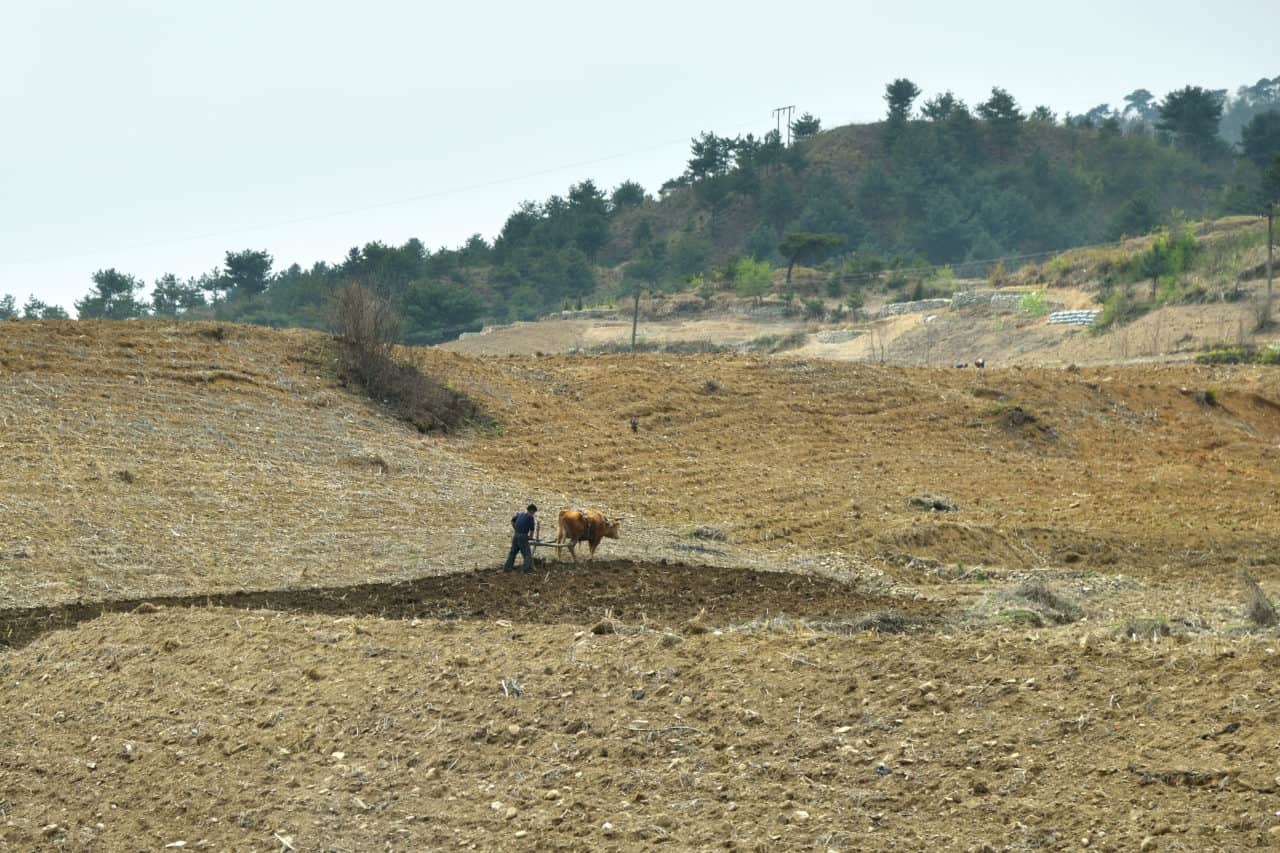
North Korean countryside © Znm|Dreamstime.com
Modeling afforestation scenarios in North Korea
Park specializes in using remote sensing data for environmental monitoring and detecting changes in land cover. During her time at IIASA, she will use the Agriculture, Forestry, and Ecosystem Services Land Modeling System (AFE-LMS) developed by IIASA to support forest restoration in North Korea.
First, Park will use land cover maps dating back to the 1980s to map the change in forest cover. She will then identify areas for potential afforestation considering land cover change, forest productivity, climate, and different environmental variables, such as soil type. She will also develop different afforestation scenarios based on forest management options and the tree species used.
According to Andrey Krasovskiy, Park’s supervisor at IIASA, when selecting tree species for afforestation we need to take into account their economic, environmental, and recreational values.
“From a set of around 10 species we need to choose those that would be the most suitable in terms of resilience to climate change and to disturbances such as fire and beetles,” he says.
Challenges in data collection
A major challenge in Park’s research is obtaining accurate information for building her models. If there is relevant research from North Korea, it is not available to foreign researchers and without being able to enter the country to collect field data in person, her research has to rely on remote sensing data or data extrapolated from South Korean studies.
Fortunately, in recent years, remote sensing technology has evolved to provide high-resolution satellite data through which we are able to take a thorough look at the land cover of the elusive country. Park will match these maps with yield tables provided by Korea University based on South Korean data. As the ecology of the two Koreas are largely similar, these maps are thought to provide accurate results.
Is there space for science diplomacy?
“Research shouldn’t have any boundaries,” notes Krasovskiy. “In reality however, the lack of scientific collaboration between research groups in South and North Korea poses a major obstacle in turning this research into policy. Luckily, some organizations, such as the Hanns Seidel Foundation in South Korea, are able to bridge the gap and organize joint activities that provide hope for a more collaborative future.”
Despite the diplomatic hurdles, Park hopes that her work will find its way to North Korean policymakers.
“I expect my research might make a contribution to help policymakers and scientific officials establish forest relevant action in North Korea,” she concludes.
Jul 8, 2021 | Biodiversity, Food & Water, Science and Policy, Young Scientists
By Neema Tavakolian, 2021 IIASA Science Communication Fellow
Young Scientists Summer Program (YSSP) participant Scott Spillias explores how the adoption of offshore seaweed farming could affect land use.
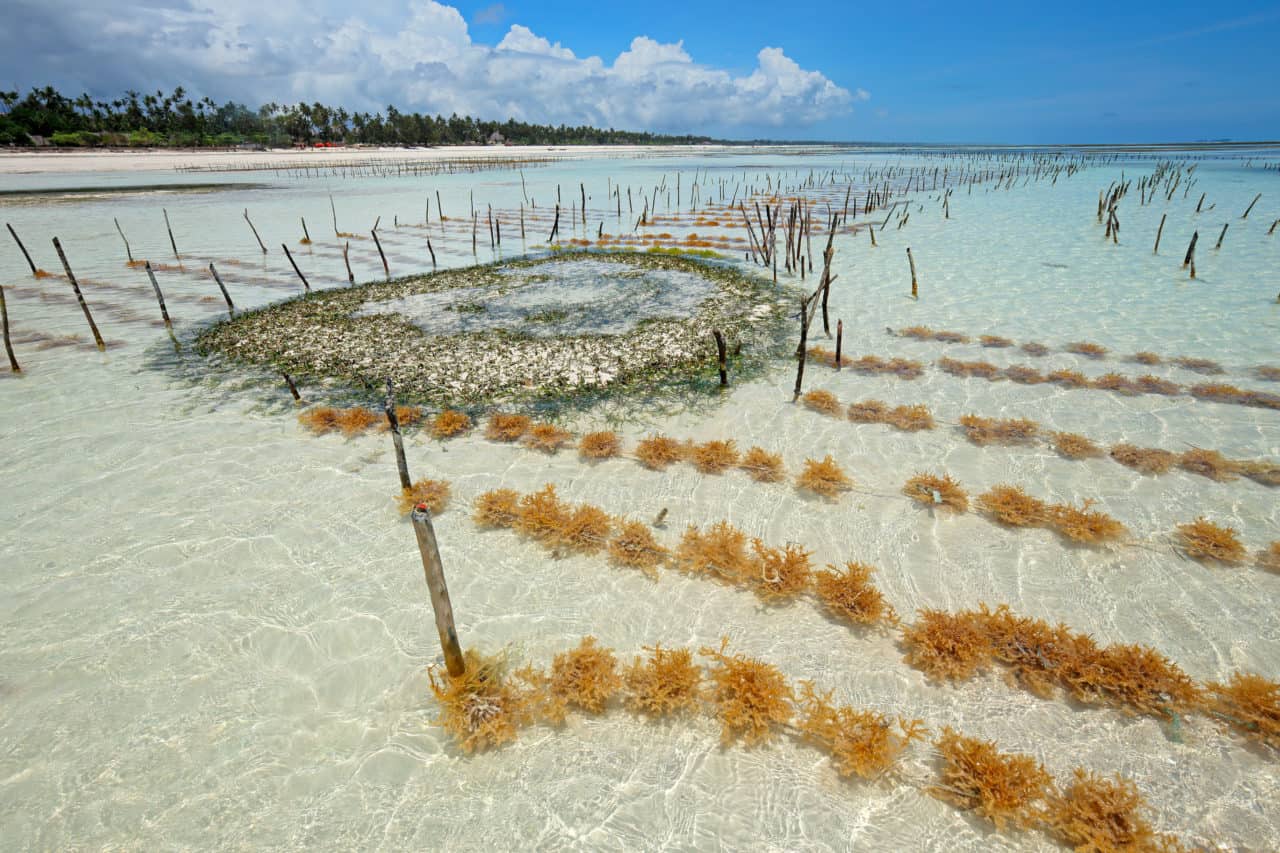
Seaweed farming in the clear coastal waters of Zanzibar island © Ecophoto | Dreamstime.com
Since the start of the industrial revolution, the Earth’s population has grown exponentially, and it is still growing every year. In addition to heavy population growth, human advances in medicine, science, and technology have allowed people to live longer lives as well. As more countries industrialize, the demand for land extensive commodities like meat and dairy have also increased. Deforestation has risen worldwide making way for cattle and other livestock grazing, and more of the food we grow is being dedicated towards livestock rather than human consumption.
With problems like unsustainable land use, climate change, and suburban sprawls in places like the United States and Australia decreasing available arable lands, this poses the question: is there any way we can feed a growing population without further damaging ecosystems and contributing to climate change? In addition to achieving this goal, we simultaneously want to promote equitable and just societies. 2021 YSSP participant Scott Spillias believes he might have a solution: seaweed.
Spillias has a background in marine biology and sailing. After years of sailing the world, he could see the alarming state of our oceans. Wanting to be part of the solution, he moved to Australia to study oceanic food systems, environmental economics, and environmental decision making at the University of Queensland.

Scott Spillias © Scott Spillias
“We live on an ocean planet, yet almost all of the food we grow comes from land. When it comes to the sea, we are essentially just unsustainably hunting and gathering from our oceans. I want to know what it would look like if instead, we tried to farm them,” Spillias explains.
Spillias says that seaweed as an agricultural product is already useful with its range of uses including food, livestock feed, fuel, fertilizer, and multiple products in the form of hydrocolloids. Hydrocolloids, more commonly known as “gums”, are extracted from plants like seaweeds and algae; they are used as setting and thickening agents in a variety of products including foods and pharmaceuticals, often increasing shelf life and quality.
A University of California, Davis study found that incorporating seaweed in cattle feed could reduce methane emissions from beef cattle by as much as 82%. Moreover, seaweed’s broad range of uses can hypothetically decrease land usage in favor of sea usage. Seaweeds also serve many ecological roles such as filtering ocean waters, serving as nurseries for small fish and crustaceans, and protecting sea floors.
There are two types of seaweed farming in use today. In parts of China, South Korea, and Japan there is floating offshore seaweed production, where the seaweed is grown and harvested while floating in deep waters. Another form of seaweed farming seen in Indonesia, Tanzania, and the Philippines involves a different approach, where the seaweed is grown and farmed closer to the coast in shallower waters, or the intertidal zone. Both provide ecosystem services, jobs, and food for local populations.
As part of his YSSP project this summer, Spillias hopes to use the IIASA Global Biosphere Management Model (GLOBIOM) to determine land-use changes brought about by large-scale seaweed production.
“We are going to assume that the seaweeds we are growing will be for food, feed, and fuel. We are also taking certain constraints into consideration, such as the inability to place seaweed farms in high traffic shipping areas or marine protected zones. Getting rough estimates of seaweed production can then give us an idea of land commodities we can replace, for instance, corn used for biofuel,” he says.
Spillias hopes that this research can provide results that can influence policy.
“Locally, seaweed farming will either be beneficial or destructive – it depends on where you put it and how you do it. Zooming out and understanding how these tradeoffs relate to terrestrial production will give policymakers a clearer idea of whether to promote or restrict the practice.”
Note: This article gives the views of the author, and not the position of the Nexus blog, nor of the International Institute for Applied Systems Analysis.
Feb 2, 2021 | Environment, Poverty & Equity, Risk and resilience, Young Scientists
By Prakash Khadka, IIASA Guest Research Assistant and Wei Liu, Guest Research Scholar in the IIASA Equity and Justice Research Group
Prakash Khadka and Wei Liu explain how unbridled, unplanned infrastructure expansion in Nepal is increasing the risk of landslides.
Worldwide, mountains cover a quarter of total land area and are home to 12% of the world’s population, most of whom live in developing countries. Overpopulation and the unsustainable use of these fragile landscapes often result in a vicious cycle of natural disaster and poverty. Protecting, restoring, and sustainably using mountain landscapes is an important component of Sustainable Development Goal 15 ̶ Life on Land ̶ and the key is to strike a balance between development and disaster risk management.
Nepal is among the world’s most mountainous countries and faces the daunting challenge of landslides and flood risk. Landslide events and fatalities have been increasing dramatically in the country due to a complex combination of earthquakes, climate change, and land use, especially the construction of informal roads that destabilize slopes during the monsoon.
According to Nepal government data, 476 incidents of landslides and 293 fatalities were recorded during the 2020 monsoon season – the highest number in the last ten years, mostly triggered by high-intensity rainfall – a trend which is increasing due to climate variations. According to one study, by mid-July 2020, the number of fatal landslides for the year had already exceeded the average annual total for 2004–2019.
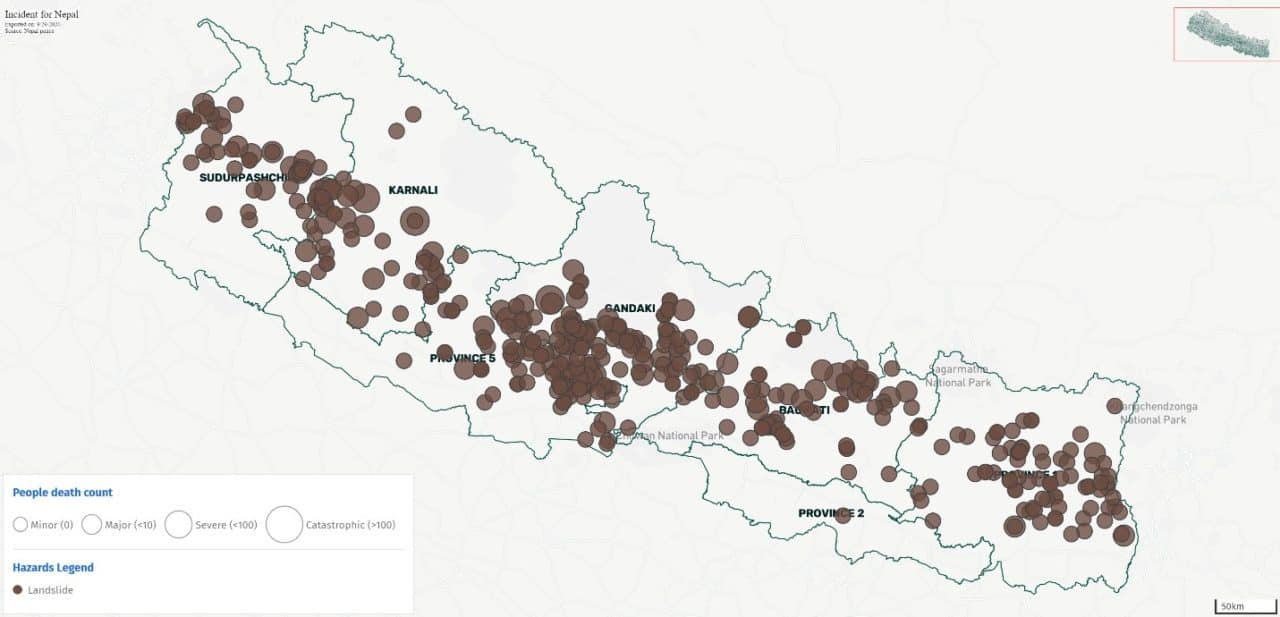
Figure 1: A map of landslide events in Nepal from June to September 2020. Source: bipadportal.gov.np
Landslides are not a new phenomenon in the country where hills and mountains cover nearly 83% of the total land area. While being destructive, landslides are complex natural processes of land development. The Gangetic plain, situated in the foothills of the Himalayas, was formed by the great Himalayan river system to which soil is continually added by landslides and deposited at the base by rivers. Mountain land changes via natural geo-tectonic and ecological processes has been happening for millions of years, but fast population growth and climate change in recent decades substantially altered the fate of these mountain landscapes. Road expansion, often in the name of development, plays a key role.
Many mountain areas in Nepal are physically and economically marginalized and efforts to improve access are common. Poverty, food insecurity, and social inequity are severe, and many rural laborers opt to migrate for better economic opportunities. This motivates road network expansion. Since the turn of the century, Nepalese road networks has almost quadrupled to the current level of ~50 km per 100 km2, among which rural roads (fair-weather roads) increased more than blacktop and gravel roads.
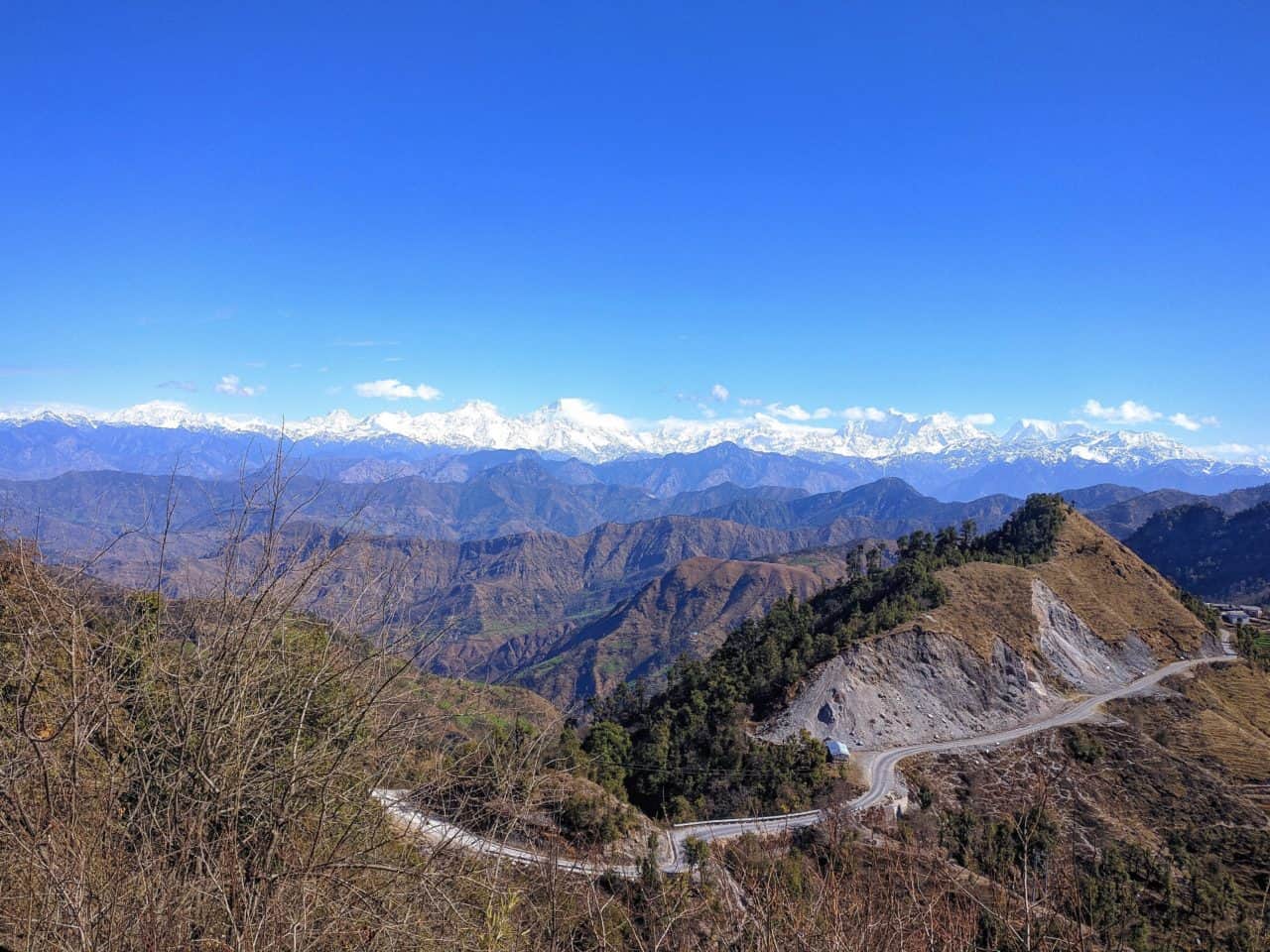
Figure 2: Mountains carved just above Jay Prithvi Highway in Bajhang district of Sudurpaschim province to build a road
Nepalese mountain roads are treacherous and subject to accidents and landslides. Rural roads, which are often called “dozer roads”, are constructed by bulldozer owners in collaboration with politicians at the request of communities (also as part of the election manifesto in which politicians promised road access in exchange for votes and support to win), often without proper technical guidance, surveying, drainage, or structural protection measures. In addition, mountains are sometimes damaged by heavy earthmovers (so-called “bulldozer terrorism”) that cut out roads that lead from nowhere to nowhere, or where no roads are needed, at the expense of economic and environmental degradation. Such rapid and ineffective road expansion happens throughout the country, particularly in the middle hills where roads are known to be the major manmade driver of landslides.
To tackle these complexities, we need to rethink how we approach development in light of climate change. This has to be done with sufficient investigation into our past actions. The Nepalese Community forestry management program, which emerged as one of the big success stories in the world, encompasses well defined policies, institutions, and practices. The program is hailed as a sustainable development success with almost one-third of the country’s forests (1.6 million hectares) currently managed by community forest user groups representing over a third of the country’s households. Another successful example is the innovation of ropeways and its introduction in the Bhattedanda region South of Kathmandu. The ropeways were instrumental in transforming farmers’ lives and livelihoods by connecting them with markets. Locals quickly mastered the operation and management of the ropeway technology, which was a lifesaver following the 2002 rainfall that washed away the road that had made the ropeway redundant until then.
These two examples show that it is possible to generate ecological livelihoods for several households in Nepal without adversely affecting land use and land cover, which in turn contributes to increased landslide risk in the country, as mentioned above.
A rugged landscape is the greatest hindrance to the remote communities in a mountainous country like Nepal. It cannot be denied that the country needs roads that serve as the main arteries for development, while local innovations like ropeways can well complement the roads with great benefits, by linking remote mountain villages to the markets to foster economic activities and reduce poverty. Such a hybrid transportation model is more sustainable economically as well as environmentally.
It is a pity that despite strong evidence of the cost-effectiveness of alternative local solutions, Nepal’s development is still mainly driven by “dozer constructed roads”. Mountain lives and livelihoods will remain at risk of landslides until development tools become more diverse and compatible.
References:
- Gyawali, D. (Ed.), Thompson, M. (Ed.), Verweij, M. (Ed.). (2017). Aid, Technology and Development. London: Routledge, https://doi.org/10.4324/9781315621630
- Gyawali, Dipak; Dixit, Ajaya; Upadhya, Madhukar (2004). Ropeways in Nepal.
- Petley, D. N. (2020). The deadly start to the monsoon season in Nepal – The Landslide Blog – AGU Blogosphere. The Landslide Blog. https://blogs.agu.org/landslideblog/2020/07/24/nepal-2020/
Note: This article gives the views of the author, and not the position of the Nexus blog, nor of the International Institute for Applied Systems Analysis.
Nov 10, 2020 | Air Pollution, China, Climate Change, Energy & Climate, Young Scientists
By Xu Wang, IIASA Young Scientists Summer Program (YSSP) alumnus and Assistant Professor at Beijing University of Technology and Pallav Purohit, researcher in the IIASA Air Quality and Greenhouse Gases Program.
Xu Wang and Pallav Purohit write about their recent study in which they found that accelerating the transition to climate-friendly and energy-efficient air conditioning in the Chinese residential building sector could expedite building a low-carbon society in China.

© Shao-chun Wang | Dreamstime.com
China saw the fastest growth worldwide in energy demand for space cooling in buildings over the last two decades, increasing at 13% per year since 2000 and reaching nearly 400 terawatt-hours (TWh) of electricity consumption in 2017. This growth was largely driven by increasing income and growing demand for thermal comfort. As a result, space cooling accounted for more than 10% of total electricity growth in China since 2010 and around 16% of peak electricity load in 2017. That share can reach as much as 50% of peak electricity demand on extremely hot days, as seen in recent summers. Cooling-related carbon dioxide (CO2) emissions from electricity consumption consequently increased fivefold between 2000 and 2017, given the strong reliance on coal-fired power generation in China [1].
In our recent publication in the journal Environmental Science and Technology, we used a bottom-up modeling approach to predict the penetration rate of room air conditioners in the residential building sector of China at the provincial level, taking urban-rural heterogeneity into account. Our results reveal that increasing income, growing demand for thermal comfort, and warmer climatic conditions, could drive an increase in the stock of room air conditioners in China from 568 million units in 2015 to 997 million units in 2030, and 1.1 billion units in 2050. In urban China, room air conditioner ownership per 100 households is expected to increase from 114 units in 2015 to 219 units in 2030, and 225 units in 2050, with slow growth after 2040 due to the saturation of room air conditioners in the country’s urban households. Ownership of room air conditioners per 100 households in rural China could increase from 48 units in 2015 to 147 units in 2030 and 208 units in 2050 [2].
The Kigali Amendment to the Montreal Protocol on Substances that Deplete the Ozone Layer will help protect the climate by phasing down high global warming potential (GWP) hydrofluorocarbons (HFCs), which are commonly used as refrigerants in cooling technologies [3]. Promoting energy efficiency of cooling technologies together with HFC phase-down under the amendment can significantly increase those climate co-benefits. It is in this context that we assessed the co-benefits associated with enhanced energy efficiency improvement of room air conditioners (e.g., using efficient compressors, heat exchangers, valves, etc.) and the adoption of low-GWP refrigerants in air conditioning systems. The annual electricity saving from switching to more efficient room air conditioners using low-GWP refrigerants is estimated at almost 1000 TWh in 2050 when taking account of the full technical energy efficiency potential. This is equivalent to approximately 4% of the expected total energy consumption in the Chinese building sector in 2050, or the avoidance of 284 new coal-fired power plants of 500 MW each.
Our results indicate that the cumulative greenhouse gas mitigation associated with both the electricity savings and the substitution of high-GWP refrigerants makes up 2.6% of total business-as-usual CO2 equivalent emissions in China over the period 2020 to 2050. Therefore, the transition towards the uptake of low-GWP refrigerants is as vital as the energy efficiency improvement of new room air conditioners, which can help and accelerate the ultimate objective of building a low-carbon society in China. The findings further show that reduced electricity consumption could mean lower air pollution emissions in the power sector, estimated at about 8.8% for sulfur dioxide (SO2), 9.4% for nitrogen oxides (NOx), and 9% for fine particulate matter (PM2.5) emissions by 2050 compared with a pre-Kigali baseline.
China can deliver significant energy savings and associated reductions in greenhouse gas and air pollution emissions in the building sector by developing and implementing a comprehensive national policy framework, including legislation and regulation, information programs, and incentives for industry. Energy efficiency and refrigerant standards for room air conditioning systems should be an integral part of such a framework. Training and awareness raising can also ensure proper installation, operation, and maintenance of air conditioning equipment and systems, and mandatory good practice with leakage control of the refrigerant during the use and end-of-life recovery. Improved data collection, research, and cooperation with manufacturers can equally help to identify emerging trends, technology needs, and energy efficiency opportunities that enable sustainable cooling.
References:
[1] IEA (2019). The Future of Cooling in China: Delivering on Action Plans for Sustainable Air Conditioning, International Energy agency (IEA), Paris.
[2] Wang X, Purohit P, Höglund Isaksson L, Zhang S, Fang H (2020). Co-benefits of energy-efficient air conditioners in the residential building sector of China, Environmental Science & Technology, 54 (20): 13217–13227 [pure.iiasa.ac.at/16823]
[3] Purohit P, Höglund-Isaksson L, Dulac J, Shah N, Wei M, Rafaj P, Schöpp W (2020). Electricity savings and greenhouse gas emission reductions from global phase-down of hydrofluorocarbons, Atmospheric Chemistry and Physics, 20 (19): 11305-11327 [pure.iiasa.ac.at/16768]
Note: This article gives the views of the author, and not the position of the Nexus blog, nor of the International Institute for Applied Systems Analysis (IIASA).
Oct 22, 2020 | Climate Change, Energy & Climate, Science and Policy
By Shorouk Elkobros, IIASA Science Communication Fellow
Assessing energy-related choices and the behaviors of households can help us transition to a low-carbon economy. How can research provide more effective decision-making tools to policymakers for better climate change mitigation policies?
We live at a defining moment for climate change, where today’s actions affect tomorrow’s reality. Every little climate-friendly decision counts. Whether we decide to insulate our houses, put solar panels on our rooftops, or invest in energy-efficient appliances. However, our personal and energy-related decisions vary based on our awareness, age, education, income, energy provider services, social norms, culture, and many other factors. Researchers are starting to pay attention to how this diversity is not well represented in the economic models that politicians use to plan climate change policies.
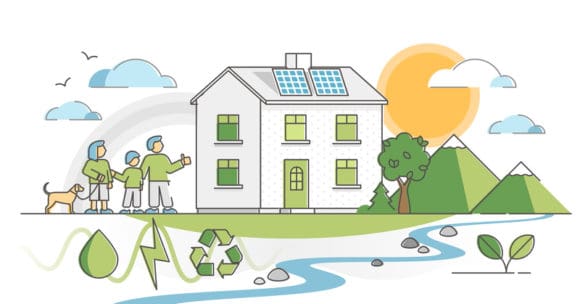
@ VectorMine | Dreamstime.com
Designing policies inspired by people
Households contribute an average of 70% of global greenhouse gas emissions. Limiting global emissions requires holistic policy approaches that take households’ behaviors and lifestyle decisions into account. Adding such a dimension can potentially upscale low carbon behavioral and social changes to national and global levels, which is fundamental to tackling climate change.
Worried about the future of the planet and motivated to support policymakers in designing better climate change mitigation policies, the authors of a recent study published in the journal Environmental Modeling & Software aspired to build bridges through interdisciplinary research. The study presented a novel interdisciplinary method that aims to integrate households’ energy behavior and social dynamics in climate-energy-economy models and thus help politicians design policies inspired by people.
“I have always been interested in the science-policy-society aspect of mitigating climate change. Climate change is a collective challenge that we need to address together to come up with better solutions for future generations,” notes study lead author Leila Niamir, a researcher jointly associated with the Mercator Research Institute on Global Commons and Climate Change, Berlin and the IIASA Transitions to New Technologies Program.
Better models for a better future
Climate change mitigation policies play a pivotal role in achieving ambitious environmental targets like the Paris Agreement or the Sustainable Development Goals (SDGs). To be able to formulate appropriate mitigation policies, decision makers need assessment tools to measure complex systems quantitatively. In the past decade, a variety of assessment tools have emerged, which have since been predominantly used to support climate change policy debates. In the study, Niamir argues that current assessment models are missing bottom-up and grassroots dynamics, they cannot project realistic variables of what households’ lifestyles and social movement are, and they therefore may not be sufficient to provide reliable information for policymakers.
There is a gap between what policymakers’ current assessment tools can offer and what social scientists and behavioral economists highlight as pro-environmental behavior and climate change mitigation movements. By adding this complex behavior and social perspective to the models, the researchers make it easier for policymakers to design future policies to accommodate different societal behaviors and lifestyles.
Niamir and her team presented a novel method for systematically upscaling grassroots dynamics by linking the best of both “top-down” macroeconomic computable general equilibrium (CGE) models and “bottom-up” empirical agent-based models (ABM). Their approach demonstrates that with computational ABM directly linked to survey data and macroeconomic CGE models, individual behavioral diversity and social influences can be considered when designing implementable and politically feasible policy options.
“We need better assessment tools to quantitatively explore the complex climate-energy-economy system, and reveal the potential of demand-side mitigation strategies. To see substantial changes, we need a mix of external interventions, from soft information policies aimed at raising awareness bottom-up, to financial incentives altering the macro landscape of energy markets and technological transitions. Only modular and integrated models can help policymakers quantitatively explore this complex system and plan for changes in the coming decades,” says Niamir.
Towards a low-carbon economy
We cannot tackle what we do not know. Pathways to a low-carbon economy future entail diminishing the growing discrepancy between mitigation policies and individual and collective behaviors. When redesigning our socio-environmental systems to mitigate climate change, we need to start looking at people as case studies rather than numbers. To transition to a low-carbon economy and accelerate decarbonization, policymakers must adopt novel models that integrate energy consumption, individual behavior, heterogeneity, and social influence into current assessment tools.
In 2019, IIASA and the Research Institute of Innovative Technology for the Earth (RITE), Japan co-organized an international workshop towards improved understanding, concepts, policies, and models of energy demand, where Niamir presented her research and received the young scientist award to continue and extend her research.
“Mitigating climate change indeed requires a massive effort from individual and social movements to advance national and international collaboration. Each individual small step towards shrinking our carbon footprint creates cascading changes in social behavior and consequently mitigates climate change,” Niamir concludes.
Reference:
Niamir L, Ivanova O, & Filatova T (2020). Economy-wide impacts of behavioral climate change mitigation: linking agent-based and computable general equilibrium models. Environmental Modelling & Software 134: e104839. [pure.iiasa.ac.at/16671]
Note: This article gives the views of the authors, and not the position of the Nexus blog, nor of the International Institute for Applied Systems Analysis.









You must be logged in to post a comment.